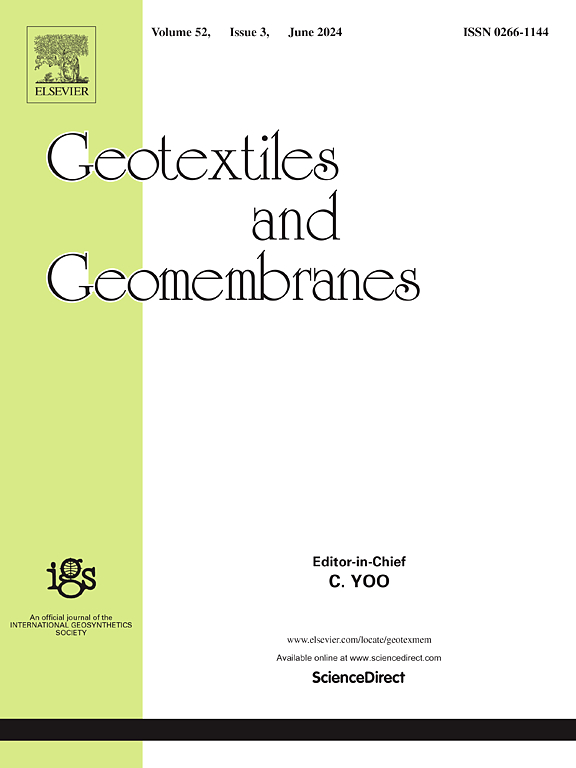包裹土工格栅稳定高填方路堤的试验与数值分析:地震反应与复合加固机制
IF 6.2
1区 工程技术
Q1 ENGINEERING, GEOLOGICAL
引用次数: 0
摘要
通过振动台试验和数值计算方法,研究了土工格栅加桩-板结构高填方路堤的地震反应及加固机理。试验结果表明,在高烈度地震荷载(PGA≥0.8g)下,土工格栅加筋复合路堤仍能保持结构完整性,仅表现为表面开裂和局部土体挤压。加速度放大因子(AAF)同时表现出“高程效应”和“表面倾向效应”,而桩-板结构的应变分布则呈现出典型的拱形和m型特征。土工格栅加固有效地约束了土体变形和应力的重新分布,延缓了桩弯矩和路堤位移的发展。其配筋效率随地震烈度增大而增大。经过验证的数值模型再现了路堤表面和路堤-堆积界面剪切应变局部化引起的裂缝。在地震作用下,路堤表面的剪切应变向内扩展。参数化研究进一步表明,减小土工格栅间距可以改善约束效应,减少位移,减轻内部剪切变形。这些发现强调了土工格栅和桩板结构在重新分配地震推力方面的协同作用,为优化地震活跃地区的加固策略提供了重要见解。本文章由计算机程序翻译,如有差异,请以英文原文为准。
Experimental and numerical analysis of wrapped geogrid-stabilized high-fill embankment: Seismic response and composite reinforcement mechanisms
This study investigated the seismic response and reinforcement mechanism of high-fill embankment reinforced with geogrid and pile-slab structure through shaking table tests and numerical method. Experimental results demonstrated that the geogrid-reinforced composite embankment can still maintain structural integrity under high-intensity seismic loading (PGA ≥0.8g), exhibiting only surface cracking and localized soil extrusion. The acceleration amplification factor (AAF) exhibited both “elevation effect” and “surface tendency effect”, while strain distribution in the pile-slab structure followed characteristic arch-shaped and M-shaped patterns. Geogrid reinforcement effectively constrained soil deformation and redistributed stresses, delaying the development of pile bending moment and embankment displacement. Its reinforcement efficiency increased with seismic intensity. Validated numerical models reproduced shear strain localization-induced cracking at both embankment surfaces and embankment-accumulation interfaces. Shear strain propagation exhibited a progressive inward expansion from the embankment surface under seismic excitation. Parametric studies further revealed that reducing geogrid spacing can improve constraint effects, minimize displacement, and mitigate internal shear deformation. These findings underscore the synergistic role of geogrids and pile-slab structures in redistributing seismic thrust forces, offering critical insights for optimizing reinforcement strategies in seismically active regions.
求助全文
通过发布文献求助,成功后即可免费获取论文全文。
去求助
来源期刊

Geotextiles and Geomembranes
地学-地球科学综合
CiteScore
9.50
自引率
21.20%
发文量
111
审稿时长
59 days
期刊介绍:
The range of products and their applications has expanded rapidly over the last decade with geotextiles and geomembranes being specified world wide. This rapid growth is paralleled by a virtual explosion of technology. Current reference books and even manufacturers' sponsored publications tend to date very quickly and the need for a vehicle to bring together and discuss the growing body of technology now available has become evident.
Geotextiles and Geomembranes fills this need and provides a forum for the dissemination of information amongst research workers, designers, users and manufacturers. By providing a growing fund of information the journal increases general awareness, prompts further research and assists in the establishment of international codes and regulations.
 求助内容:
求助内容: 应助结果提醒方式:
应助结果提醒方式:


